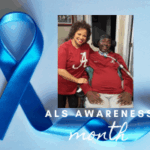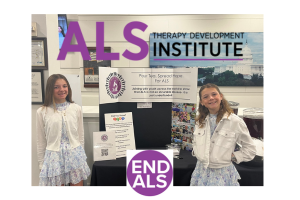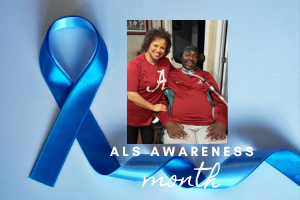The ALS Ice Bucket Challenge was perhaps the fundraising campaign of the decade.
Cold. It was really really cold. Like, so-cold-it-burns cold. Like, I-can’t-feel-my-skull cold. Like, it-was-a-super-long-week-and-I-drank-my-frozen-daiquiri-too-fast cold.
Weirdly, though, that cold felt good. And it wasn’t just because it was August and I was sweating so much you could fill a swimming pool with it. It felt good because about three seconds after that icy water numbed my veins, the heat of the summer melted it away and set all my nerve endings on fire. Whoa, boy, did I feel alive! And in that summer, a few months after my grandmother died of ALS, feeling alive felt really really good.
Plus, having my friend dump a bucket of ice water on me one Friday after work while I stood fully-clothed in a blazer and jeans was just plain…well, fun. It made me smile (and maybe scream a little).
Perhaps that’s why the Ice Bucket Challenge was so successful in the summer of 2014. It’s nice to think that it grew to viral phenomenon proportions and raised $115 million because, at its core, its intent was to make someone smile.
That’s why pro golfer Chris Kennedy started the challenge, after all. To cheer up his cousin Anthony, who was battling ALS. Over social media, Chris challenged Anthony’s wife to dump a bucket of ice water on her head. It was a gag, a gimmick…and it turned out to be an “A-Ha” moment for the ALS community.
It became the fundraising campaign of the decade.
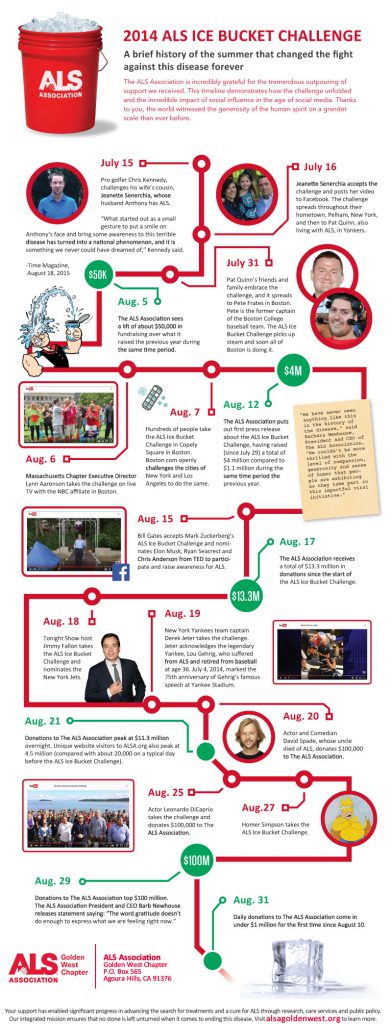
(Infographic courtesy of the ALS Association Golden West Chapter webpage)
Throughout July and August of 2014, every time we turned on the tv or scrolled through our social media, we saw yet another influential celebrity dousing themselves in freezing cold water or signing a check with lots of zeros (we’re looking at you, Patrick Stewart, you flawlessly dignified demigod!). There were funny videos, touching videos, epic fail videos. And in every subsequent ice bucket dumped, video posted, challenge made, and check signed, we witnessed the power of a united effort and the enormous impact that small contributions built upon one another can have on a movement. We saw the result of a chain reaction.
That result was a whopping $115 million raised for research and treatment advancement, compared to the $1.9 million raised during the same time period the previous year for The ALS Foundation. Because of teamwork, the world discovered five new therapy-driving genes, funded over 200 new research projects, increased funding for certified ALS treatments centers by 100%, and funded community-based services that continue to help over 15,000 patients every year.
We changed the way we think of ALS. Suddenly, it was something we were equipped to fight.
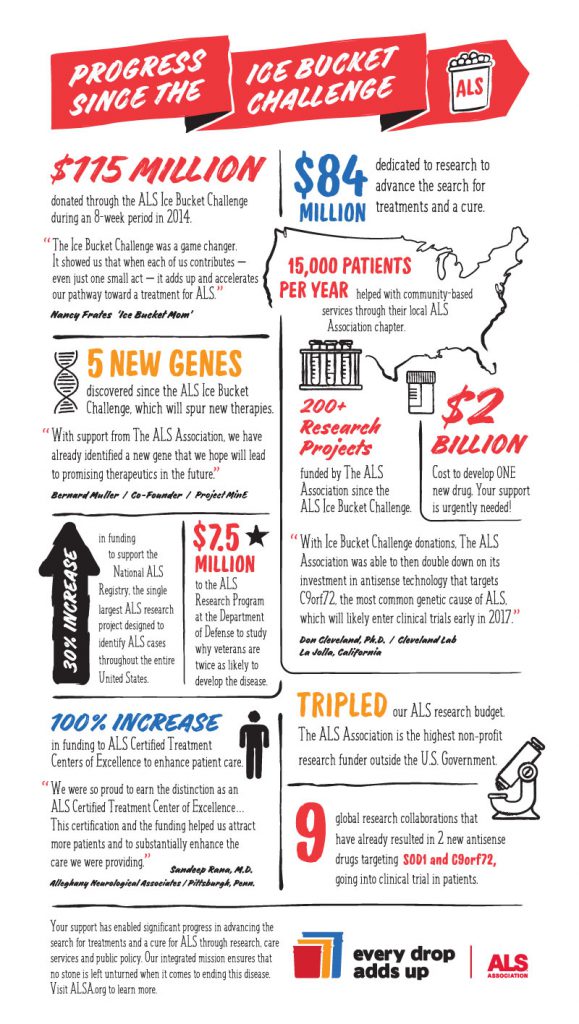
(Infographic courtesy of The ALS Association webpage)
Overnight, ALS went from being the disease no one had ever heard of to the disease we might actually someday defeat. With relentless research, advocacy, and community effort, we will one day make ALS a livable disease as livable as diabetes or asthma.
But like all viral trends, the Ice Bucket Challenge risks petering out. Social media has a short attention span, and it moves quickly on to “the next big thing.” So as we work ceaselessly towards finding new therapies and, eventually, a cure, we also need to build upon the momentum of the Ice Bucket Challenge and next ALS awareness campaign. We’re on the hunt for the next “A-Ha” moment.
So we call upon creatives and innovators of all disciplines, not just the sciences.
If you are an artist, we challenge you to publish a story, create a mural, record a song. If you’re an athlete, host a fun run or a 3-on-3 tournament (or a cornhole tournament — now, there’s an idea!). If you’re a baker, organize a bake-off. Get creative and have fun! Because if we learned anything from the Ice Bucket Challenge, it’s this:
- Successful fundraising is genuinely fun
- Small actions built upon one another can have truly big impacts
- You never know what silly personal gesture will be the next “A-Ha” moment
About SimpliHere
The mission of SimpliHere is to ensure efficient care and peace of mind for caregivers and their patients with neurological conditions that impact communication and mobility. Joanna Rosenberg founded SimpliHere to address communication gaps between caregivers and patients. Her personal experience when her mother lived with ALS exposed the challenges of communicating and understanding basic needs, as well as managing daily tasks. Download SimpliHere today!





